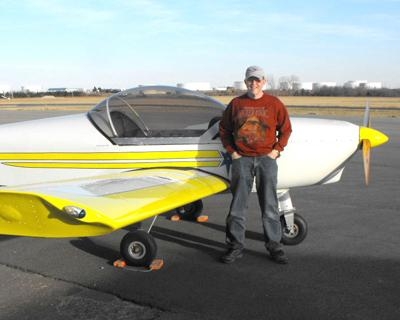Fri, Jul 11, 2014
Sport Pilot Rules Require Less Training For Certification, But That Does Not Mean They Are Less Safe?
While sport pilots may be certificated with less hours of training, the number of hours of training is not as important as how the training is applied to the mission.

As the sport pilot certification rules were being published for public comment, a prominent aviation writer opined that the countryside would be scattered with bodies because of the lower training standards for sport pilots. If all you do is compare the number of hours required for pilot certification, I guess I can see the concern for safety, but training hours alone don’t reflect the true measure for training.
Pilot training is aimed at performing a mission, and the mission of the sport pilot rules is to fly in a simple, limited performance aircraft, with pilot limitations that match recreational flying needs. Look at it this way; U.S. Air Force and U.S. Navy pilots are some of the best pilots in the world. However, Navy pilots are trained to land on ships and Air Force pilot are not. To conclude that Navy pilots have more training and are, therefore, better than Air Force pilots is absurd. These pilots are simply trained for different missions.
The mission of the sport pilot rule is to keep it simple, and the rule accounts for this. If you look at the student pilot training rules and the practical test guides for obtaining a pilot certificate, sport pilot and private pilot are almost identical. When it comes to demonstrating “stick-and-rudder” skills, the final checkride for private and sport pilot are the same.
There is no night training for sport pilots because they are not allowed to fly at night. Sport pilots are not required to have instrument training and their higher minimum visibility requirements account for this. Sport pilots can choose not to receive training in tower controlled airspace and are restricted form such airspace unless they receive appropriate training. Sport pilots are limited to lower performance aircraft; private pilots are not. Of course, any sport pilot may obtain any additional training he or she wants to receive even if it’s just to expand knowledge and experience.
Safety is a function of good decision making at any pilot certification level; it does not automatically occur because of logged flight hours. Any pilot at any certification level that is careless, inattentive, or not trained for the task is an unsafe pilot. It has nothing to do with the pilot certificate.
(Image from file)
More News
He Attempted To Restart The Engine Three Times. On The Third Restart Attempt, He Noticed That Flames Were Coming Out From The Right Wing Near The Fuel Cap Analysis: The pilot repor>[...]
Make Sure You NEVER Miss A New Story From Aero-News Network Do you ever feel like you never see posts from a certain person or page on Facebook or Instagram? Here’s how you c>[...]
From 2009 (YouTube Edition): Leading Air Show Performers Give Their Best Advice for Newcomers On December 6th through December 9th, the Paris Las Vegas Hotel hosted over 1,500 air >[...]
Aero Linx: NASA ASRS ASRS captures confidential reports, analyzes the resulting aviation safety data, and disseminates vital information to the aviation community. The ASRS is an i>[...]
“For our inaugural Pylon Racing Seminar in Roswell, we were thrilled to certify 60 pilots across our six closed-course pylon race classes. Not only did this year’s PRS >[...]
 NTSB Final Report: Rutan Long-EZ
NTSB Final Report: Rutan Long-EZ ANN FAQ: Turn On Post Notifications
ANN FAQ: Turn On Post Notifications Classic Aero-TV: ICAS Perspectives - Advice for New Air Show Performers
Classic Aero-TV: ICAS Perspectives - Advice for New Air Show Performers ANN's Daily Aero-Linx (06.28.25)
ANN's Daily Aero-Linx (06.28.25) Aero-News: Quote of the Day (06.28.25)
Aero-News: Quote of the Day (06.28.25)



